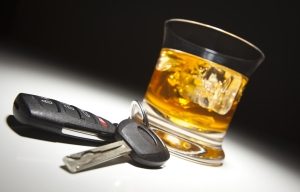The nation watched in horror as Hurricane Sandy devastated the East Coast recently. The flooding that came from the storm caused damage to structures, people, and automobiles. Although the most important issue at hand is rebuilding homes and shelter for those who lost everything, we want to provide insight on a lesser significant topic: vehicles damaged by flooding and water.
It is estimated that approximately 230,000 automobiles were damaged during Hurricane Sandy. The correct procedure for these damaged vehicles would be for owners to have them crushed at facilities that offer this sort of service. Unfortunately, some owners and dealerships will still attempt to make money off these damaged cars. Many will clean the vehicle up, dry it out, and sell it through smaller, less dependable dealerships or private individuals. These cars, trucks, and SUVs will most likely have extensive water damage, which can be hidden from the outside in an effort to beat the system. The safety features of these vehicles, however, will be compromised greatly. This damage by water could lead to computer or electrical systems failing, anti-lock brake systems to malfunction, and airbags to fail or deploy at unnecessary times. These defective systems could cause serious injury to passengers in the event of an accident. East coast citizens are not the only ones that should be weary of these types of vehicles, as they are usually shipped away from damaged areas to be sold as though they did not experience the storm.
So how should one prevent purchasing a water-damaged vehicle from storms such as Hurricane Sandy? First, do not purchase a vehicle until you’ve seen the title and verified there is no “salvage” or “flood” stamp located on it. You should also hire a mechanic to search for water or flood damage, as well as check the VIN. Use the VIN to check the NICB or CARFAX databases free of charge to determine whether it has been reported as a recovered vehicle or as having been damaged in Hurricane Sandy.
Determining whether a vehicle has been flooded prior to purchase can be difficult. Here is a list of things to look for that mean the vehicle may have water damage:
- Rusty screws or rust on other metal pieces in the vehicle.
- Moisture or dampness in the floorboard and carpet, as well as on the interior of the instrument panel.
- Mildew or silt in unusual places, like under the carpet in the truck or hatch, as well as near the engine compartment.
- Water stains on upholstery or dashboards.
- Faded upholstery or discoloration of the door panels, seats, or seat belts.
- Moldy odors or strong deodorizer smells can mean that dealers attempted to mask an odor issue.
- Warning lights not working correctly.
- Exterior lights not working correctly.
- Wires cracking when you flex them. This means they were wet at one time and became brittle once they dried.
As members of the Marietta community, the attorneys and staff at Jones & Swanson want to keep readers from making uneducated purchases. The diminished value associated with purchasing a vehicle that has water damage is great. After purchasing a vehicle with damage such as this, it could be difficult to track down the seller to press charges, so educated yourself fully before making large purchases such as a new vehicle. At Jones & Swanson, we want to help those in the Marietta community to better understand the risks involved with automobiles and the purchase of them. If you or someone you know have questions about cars that have been dishonestly sold or marketed, contact our firm today at (770) 427-5498. We will be happy to answer any questions you may have about vehicle purchases, auto accidents, and liability in such incidents.










